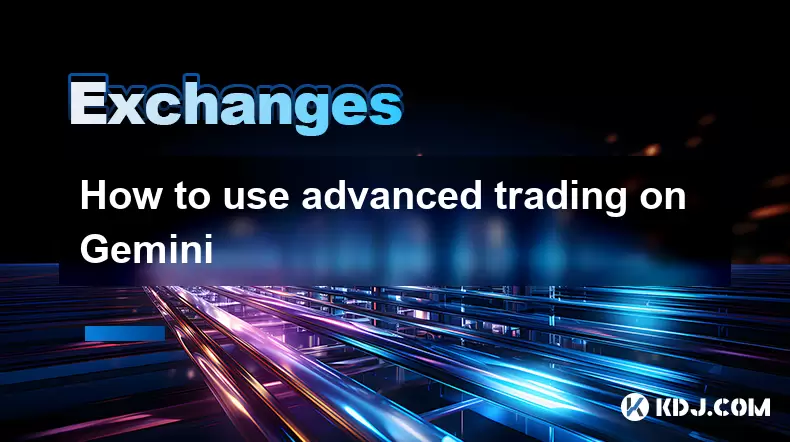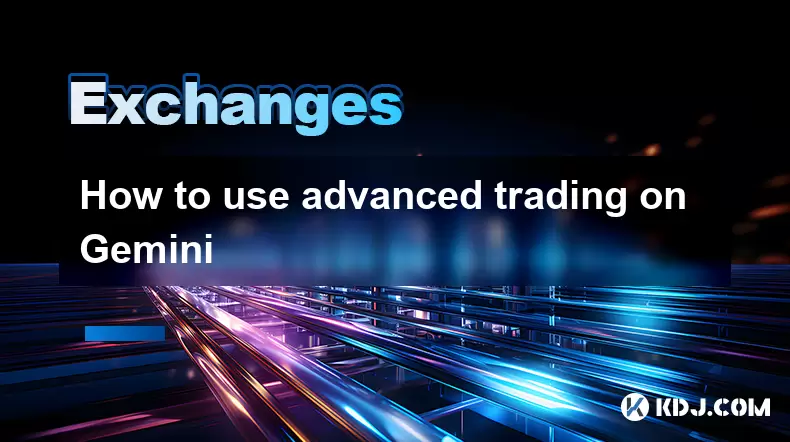-
 Bitcoin
Bitcoin $116400
-0.36% -
 Ethereum
Ethereum $4033
3.40% -
 XRP
XRP $3.302
-1.26% -
 Tether USDt
Tether USDt $1.000
-0.02% -
 BNB
BNB $796.1
1.67% -
 Solana
Solana $177.8
1.89% -
 USDC
USDC $0.9999
0.00% -
 Dogecoin
Dogecoin $0.2314
4.09% -
 TRON
TRON $0.3381
0.14% -
 Cardano
Cardano $0.7989
1.22% -
 Stellar
Stellar $0.4496
-1.84% -
 Chainlink
Chainlink $20.42
9.42% -
 Hyperliquid
Hyperliquid $41.17
0.88% -
 Sui
Sui $3.914
3.77% -
 Bitcoin Cash
Bitcoin Cash $584.7
1.52% -
 Hedera
Hedera $0.2632
-0.54% -
 Avalanche
Avalanche $24.09
3.40% -
 Ethena USDe
Ethena USDe $1.001
-0.02% -
 Litecoin
Litecoin $123.2
1.33% -
 Toncoin
Toncoin $3.318
-0.04% -
 UNUS SED LEO
UNUS SED LEO $8.984
-0.05% -
 Shiba Inu
Shiba Inu $0.00001323
2.85% -
 Uniswap
Uniswap $10.90
4.41% -
 Polkadot
Polkadot $3.999
3.34% -
 Dai
Dai $1.000
0.01% -
 Cronos
Cronos $0.1630
9.64% -
 Bitget Token
Bitget Token $4.484
0.82% -
 Monero
Monero $272.4
2.44% -
 Pepe
Pepe $0.00001173
6.03% -
 Aave
Aave $290.8
2.88%
How to export Gate.io's account assets to Excel?
Gate.io lacks a direct Excel export, but you can manually enter data, use the API for efficiency, or cautiously employ third-party tools to compile your asset history.
Mar 31, 2025 at 12:43 am

Gate.io, a popular cryptocurrency exchange, doesn't offer a direct export function to download your complete account asset history as a single Excel file. However, there are several workarounds you can use to achieve a similar result. This guide will detail these methods, allowing you to compile your Gate.io asset information into an Excel spreadsheet.
Method 1: Manual Data Entry
This method is the most straightforward, though time-consuming, particularly for users with extensive trading history.
- Navigate to your Gate.io account's "Funds" or "Wallet" section. This usually displays your current balance for each cryptocurrency.
- Note down the cryptocurrency and its corresponding balance. You can manually copy and paste this data into a spreadsheet program like Microsoft Excel or Google Sheets.
- Repeat this process for each cryptocurrency you hold on the exchange. Remember to record the date and time of your data extraction for accuracy.
- For historical transaction data, you'll need to individually review each transaction within the "Trade History" section. Manually record the date, time, cryptocurrency involved, amount, and transaction type (buy, sell, deposit, withdrawal).
This method is best for users with a limited number of transactions or those who prioritize accuracy above speed. While laborious, it guarantees complete control over the data. Remember to double-check your entries to minimize errors. Consider using a template to ensure consistency in your data organization.
Method 2: Using the Gate.io API (Advanced Users)
For users comfortable with programming and APIs, utilizing the Gate.io API offers a more efficient solution. This method requires technical expertise and familiarity with programming languages like Python.
- First, you need to obtain API keys from your Gate.io account settings. Handle these keys with extreme care, as they grant access to your account.
- Next, you'll need to write a script (e.g., in Python) that interacts with the Gate.io API to retrieve your transaction history and balances. The specifics will depend on the API documentation provided by Gate.io.
- The script will then format the retrieved data into a structured format suitable for exporting to Excel. This usually involves creating a CSV (Comma Separated Values) file.
- Finally, open the CSV file in Excel or Google Sheets. The data should automatically be organized into columns.
This method is significantly faster for users with large transaction histories. However, it requires programming skills and understanding of APIs. Incorrectly implemented scripts can lead to data loss or security vulnerabilities. Always test your script thoroughly before using it on your main account.
Method 3: Third-Party Tools (Use with Caution)
Several third-party tools claim to provide cryptocurrency portfolio tracking and export functionalities. While these tools can simplify the process, it's crucial to exercise caution.
- Research the tool thoroughly before using it. Check reviews and ensure the tool has a strong reputation for security and data privacy.
- Never provide your API keys or login credentials to any third-party tool unless you are absolutely certain of its legitimacy and security.
- Once you've chosen a reputable tool, follow its instructions to connect your Gate.io account and export your data to Excel.
This method provides convenience but introduces a third-party dependency. Always prioritize security and verify the tool's trustworthiness before granting it access to your account information. Remember, you are entrusting your sensitive data to a third-party provider.
Addressing Common Questions
Q: Is there a direct export function in Gate.io for Excel?
A: No, Gate.io does not currently offer a direct export function to download your account assets to an Excel file. The methods outlined above are workarounds.
Q: How can I ensure the accuracy of my exported data?
A: For manual entry, meticulously double-check your data. For API methods, thoroughly test your script. For third-party tools, verify their accuracy against your Gate.io account balance.
Q: What are the security risks involved in using third-party tools?
A: Third-party tools pose a risk of data breaches or malicious access if not chosen carefully. Only use reputable tools and never share your API keys or login credentials unless absolutely necessary.
Q: What if I have a very large transaction history?
A: The API method is the most efficient for large transaction histories, but requires programming skills. Consider breaking down the manual process into smaller, manageable chunks if using that method.
Q: Can I automate the data export process?
A: Yes, using the API method allows for automation. You can schedule your script to run regularly and automatically update your Excel file.
Q: Are there any free tools available for exporting my Gate.io data?
A: Some third-party tools offer free plans, but they may have limitations. Always check the terms and conditions before using any free tool. The API method is a free option, but requires programming knowledge.
Q: What information should be included in my Excel sheet?
A: At minimum, include the date, time, cryptocurrency, amount, and transaction type (buy, sell, deposit, withdrawal). Adding fees paid and current balance would also be beneficial.
Disclaimer:info@kdj.com
The information provided is not trading advice. kdj.com does not assume any responsibility for any investments made based on the information provided in this article. Cryptocurrencies are highly volatile and it is highly recommended that you invest with caution after thorough research!
If you believe that the content used on this website infringes your copyright, please contact us immediately (info@kdj.com) and we will delete it promptly.
- Maxi Doge Presale: The Meme Coin That's Pumping Iron and Prices!
- 2025-08-09 19:10:11
- Rare Coin Warning: Don't Get Fooled by That 1p Coin!
- 2025-08-09 18:50:12
- Cardano, Unilabs, and Tron Price: Decoding the Latest Crypto Buzz
- 2025-08-09 18:30:12
- Aerodrome Finance: Price Targets and the Bullish Channel - What's Next?
- 2025-08-09 18:50:12
- BlackRock and the Crypto ETF Landscape: No XRP (Yet!), But What's Next?
- 2025-08-09 19:10:11
- Rare Coin Frenzy: eBay Sees 2p Coin Listed for Over £2K!
- 2025-08-09 18:55:11
Related knowledge

How to use margin trading on Poloniex
Aug 08,2025 at 09:50am
Understanding Margin Trading on Poloniex

How to use advanced trading on Gemini
Aug 08,2025 at 04:07am
Understanding Advanced Trading on GeminiAdvanced trading on Gemini refers to a suite of tools and order types designed for experienced traders who wan...

How to use advanced trading on Gemini
Aug 08,2025 at 10:56pm
Understanding Advanced Trading on GeminiAdvanced trading on Gemini refers to the suite of tools and order types available on the Gemini ActiveTrader p...

How to get my API keys from KuCoin
Aug 08,2025 at 06:50pm
Understanding API Keys on KuCoinAPI keys are essential tools for users who want to interact with KuCoin's trading platform programmatically. These key...

How to trade options on Deribit
Aug 09,2025 at 01:42am
Understanding Deribit and Its Options MarketDeribit is a leading cryptocurrency derivatives exchange that specializes in Bitcoin (BTC) and Ethereum (E...

How to deposit USD on Bitstamp
Aug 07,2025 at 05:18pm
Understanding Bitstamp and USD DepositsBitstamp is one of the longest-standing cryptocurrency exchanges in the industry, offering users the ability to...

How to use margin trading on Poloniex
Aug 08,2025 at 09:50am
Understanding Margin Trading on Poloniex

How to use advanced trading on Gemini
Aug 08,2025 at 04:07am
Understanding Advanced Trading on GeminiAdvanced trading on Gemini refers to a suite of tools and order types designed for experienced traders who wan...

How to use advanced trading on Gemini
Aug 08,2025 at 10:56pm
Understanding Advanced Trading on GeminiAdvanced trading on Gemini refers to the suite of tools and order types available on the Gemini ActiveTrader p...

How to get my API keys from KuCoin
Aug 08,2025 at 06:50pm
Understanding API Keys on KuCoinAPI keys are essential tools for users who want to interact with KuCoin's trading platform programmatically. These key...

How to trade options on Deribit
Aug 09,2025 at 01:42am
Understanding Deribit and Its Options MarketDeribit is a leading cryptocurrency derivatives exchange that specializes in Bitcoin (BTC) and Ethereum (E...

How to deposit USD on Bitstamp
Aug 07,2025 at 05:18pm
Understanding Bitstamp and USD DepositsBitstamp is one of the longest-standing cryptocurrency exchanges in the industry, offering users the ability to...
See all articles

























































































